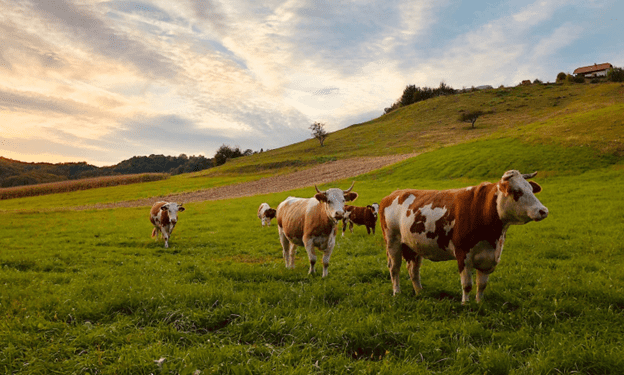
A study conducted by a group of researchers published on Nature Food, titled ‘Vegans, vegetarians, fish-eaters and meat-eaters in the UK show discrepant environmental impacts’, has confirmed beliefs on the basis of data that plant-based diets are far superior to animal-based diets in terms of reduced environmental impact. In the study, the researchers looked at the environmental impact of the plant-based diet versus the animal-based diet. The study revealed that the human food production cycle contributed to 34% of the world’s greenhouse gas (GHG) emissions, of which animal-based food products were the worst offenders. The impact that animal-based food production had came in the form of GHG emissions such as methane, from heavy land use in the form of deforestation, and water use – all of which results in biodiversity loss. To best gauge the environmental impact that both kinds of diets have, the researchers first handed out food frequency questionnaires. These questionnaires asked the candidates to provide information regarding their age, gender and calorie intake, as well as other information concerning their diet. The researchers then divided these candidates into sub-categories for the purpose of better understanding the impact of each diet. These groups were: ‘Vegan’, ‘Vegetarians’, ‘Fish-eaters’, ‘Low Meat Eaters’, ‘Medium Meat Eaters’ and ‘High Meat Eaters’. Greenhouse Gas Emissions The research revealed that the dietary CO2 emissions for vegans were 30.3% of that of high meat eaters. Within the meat-eating groups itself, a high variation was observed. Low meat eaters only contributed 57% of the CO2 that high meat eaters emit. While studying CH4 (Methane) emissions from these diets, the researchers observed that the emissions from high meat eaters sat alarmingly high – 15.3 times ahead of the vegans. Surprisingly, N20 emissions, which are seen during the use of fertilizers, were 3.6 times higher in a high meat eater diet as compared to vegan diets. This discrepancy was due to the production of crops that are then fed to the livestock. Similarly, the 100-year Global Temperature Change Potential (GTP100) was 3.6 times greater in high meat eater diets as compared to vegan diets. The same applied to the 20-year Global Warming Potential, where for the high meat eater diets, it was 5.1 times greater than for vegan diets. Land Use and Water Use Land use refers to the use of land for human activities and purposes. This land use is at its highest during the production of high-meat-eating diets and lowest for vegan diets. High meat eater diets use 16.78 square meters of land per day, while vegan diets use 4.37 square meters per day. The study, however, does not delve into the whys of this great disparity. It likely stems from the deforestation that comes from developing meat processing plants, as well as other land uses to cultivate livestock. Similar to land use, water use sees a similar trend, with vegan diets sporting the lowest number. Vegan diets account for 0.41 cubic meters a day, while high meat eater diets account for more than double – 0.89 cubic meters a day. Eutrophication, which is the phenomenon of enrichment of soil to the point where it becomes harmful, is also highest in the production of high meat eater diets. The data presented by the researchers paints a grim picture. The researchers state that to help our environment, we must alter our diets, alongside technological advances, closing yield gaps and reducing food waste.
28 Aug 2023
Mohammad Sadiq